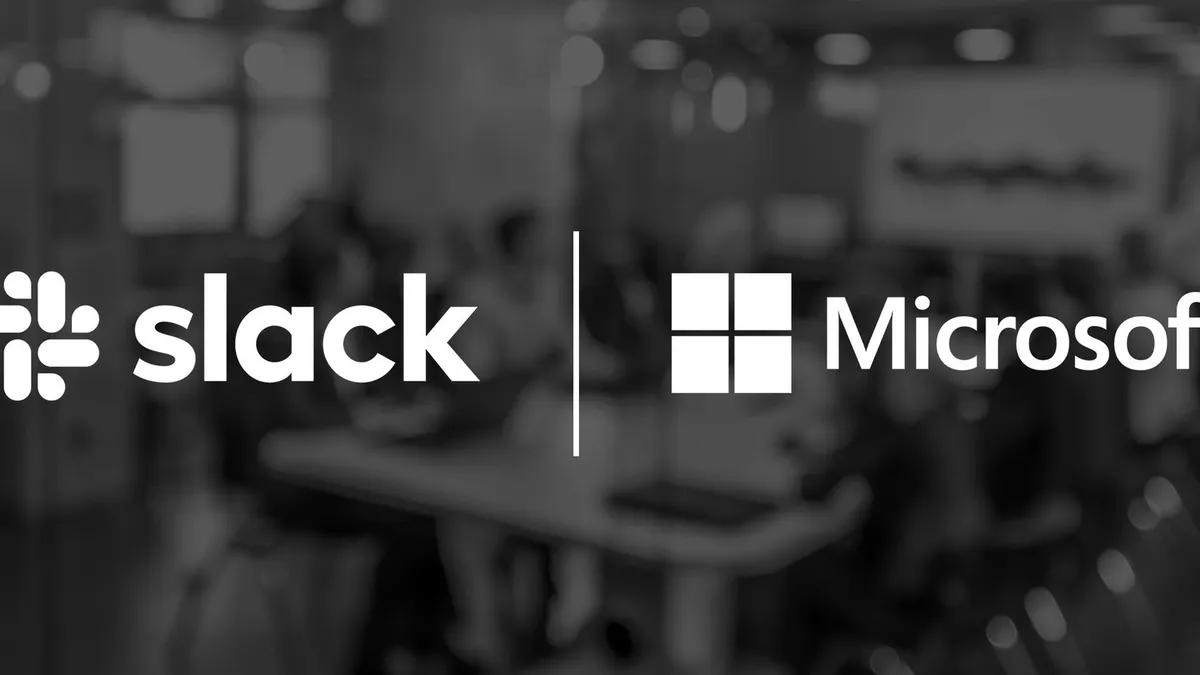Less than a week after Slack made its debut on the New York Stock Exchange, research firm ETR challenged the growth Slack bet its direct listing on.
ETR expects Slack's adoption to stall — or even fall slightly — in the second half of 2019, based on responses from 900 CIOs and IT decision makers. Microsoft Teams adoption, on the other hand,is expected to rise.
This month, Microsoft announced for the first time how many active daily users Teams has: 13 million, more or less, which confirmed ETR's predictions for Teams' growth. Slack's latest active daily users were 10 million, announced in January.
There are some noteworthy caveats in ETR's survey. When ETR asked about spending intentions for the rest of the year, it largely pegged the market as a two-horse race between Slack and Microsoft Teams.
The research grouped Teams and Slack with other workplace productivity apps like Atlassian, Smartsheet, Adobe, Box and Dropbox, excluding apps more closely related to Teams and Slack, like Google Chat and Workplace by Facebook.
While Slack's growth rate has slowed in comparison to Teams, there are plenty of viable collaboration offerings in the market — a market Microsoft has yet to win.
"We got the two 800-pound gorillas, [but] there are still others and some of them are surviving," said Art Schoeller, VP, principal analyst for Forrester, in an interview with CIO Dive.
A bygone market
There used to be 35 to 40 collaboration vendors on the market, but the market has since consolidated, giving way to a new business opportunity in workstream collaboration.
The workstream collaboration market has about another five years before it plateaus, according to Gartner, leaving little wiggle room for companies to miss out on customers. So companies are taking action.
In February, ServiceMax acquired Zinc, a collaboration tool for deskless and field workers. Unified communication vendors have found ways to break the binds of voice-only or messaging-only communications, like Cisco Jabber.
RingCentral bought Glip several years ago, to integrate the cloud-based collaboration company to do calls, messaging, and meetings to "the point where they're a viable alternative to Slack or Teams," said Schoeller.
Finding niche markets is the strength of these vendors, whereas tools like Teams speaks to the enterprise user base at large.
"The best possible outcome for a collaboration tool would be to enable all of these capabilities through a single platform, and that’s the fight we will soon start to see," said Jonathan Christensen, chief experience officer at Symphony, told CIO Dive. "Slack and Microsoft Teams shouldn't be called the unequivocal winners just yet."
Teams' bundled edge
Teams entered the collaboration ring in March 2017, years after Slack and months after Workplace by Facebook. The company already had Lync, instant messaging, audio and video call services, and Skype. The two tools would later become rebranded as Skype for Business. But the solutions lacked cloud deployment, easy on-boarding and external communications, which Slack had.
"It actually looked like Microsoft was caught off guard," said Christensen. Microsoft began development on Teams after "Slack proved the cloud SaaS approach to team messaging."
Microsoft is known for its ability to replicate a competitor's technology in-house. The company's initial iterations are not always be up to par with pure play offerings, but give Microsoft a couple of years and the products will be competitive equals, according to Thomas DelVecchio, founder and CEO of ETR, in an interview with CIO Dive.
For example, data visualization company Tableau's stock dropped by 50% in one day because of matured competition, reported Fortune. The drop fell during a time competitors, like Microsoft's Power BI, became tools comparable to Tableau.
Slack's initial "x-factor" was its freemium subscription model and a painless sign up process. By July 2018 Microsoft debuted its free version of Teams, ideal for freelancers or small businesses.
In 2017 Slack announced Enterprise Grid, the "industrial strength Slack," said Schoeller, to attract larger enterprises in need of more encryption and controls.
By this point, both companies hit on each other's dominant features. Since Teams' debut in 2017, the competitive distance between the two companies has compressed significantly.
A review of Slack's S-1 form, filed with the Securities and Exchange Commission (SEC) in April, shows Slack had more than 88,000 paid customers, including more than 65 Fortune 100 companies.
The size of the teams using Slack in those Fortune 100 companies is unknown, said DelVecchio.
While the companies' free versions are now more or less on par, Microsoft still has the upper hand as a holistic software vendor. Teams is essentially free with an Office 365 subscription, where Slack Enterprise Grid can be about $20 per user.
In an enterprise with more than 30,000 employees, $20 per user adds up.
"The economics of Teams is difficult to beat if you’re competing on a feature-to-feature basis," said Christensen.
Automated and integration capabilities are two of the primary offerings that keep competitors thriving in the collaboration market. Slack and Microsoft have strengths in these areas, but core IP at the platform level is debatably the most important differentiator, according to Christensen.
"Slack doesn’t have this, which is why other companies are able to take away market share so quickly," said Christensen. "I don't envy the situation Slack is in — staring at the Microsoft train coming down the tracks."
A soft spot for Slack
The two platforms are so similar, the cost isn't always justifiable to spend; unless it's for developers and techies.
Slack is beloved by developers because it's easy to build apps on its API and it allows for easy onboarding.
"There's a high degree of propensity that your development teams will be using Slack. Period," said Schoeller. "I've never seen an application with such emotional attachment."
"You can run the development team over with a train, the train passes, they stand up, they're all bloodied and bruised, and they're still using Slack. They love it," said Schoeller. "And they will defend it to the death."
For companies outside the tech industry, developers' adoration of Slack doesn't resonate. With an Office 365 subscription, it doesn't have to.
"Teams is Slack, so why buy Slack?" asked DelVecchio.
When clients ask Schoeller which collaboration platform is best, he first wants to know who in their organization use Slack and the answer is always developers. But the company as a whole was a Microsoft shop. ETR respondents were moving to Teams because their company was already paying for Office 365.
Developers, however, maintained an emotional attachment to Slack, "rather than technical or functional ones," said a respondent from a global privately held online travel organization. It's "hard to change some folk's working habits."
Teams "has teething problems," the respondent said. But their company was able to cut expenses by replacing Slack and WebEx with one product: Teams.





















